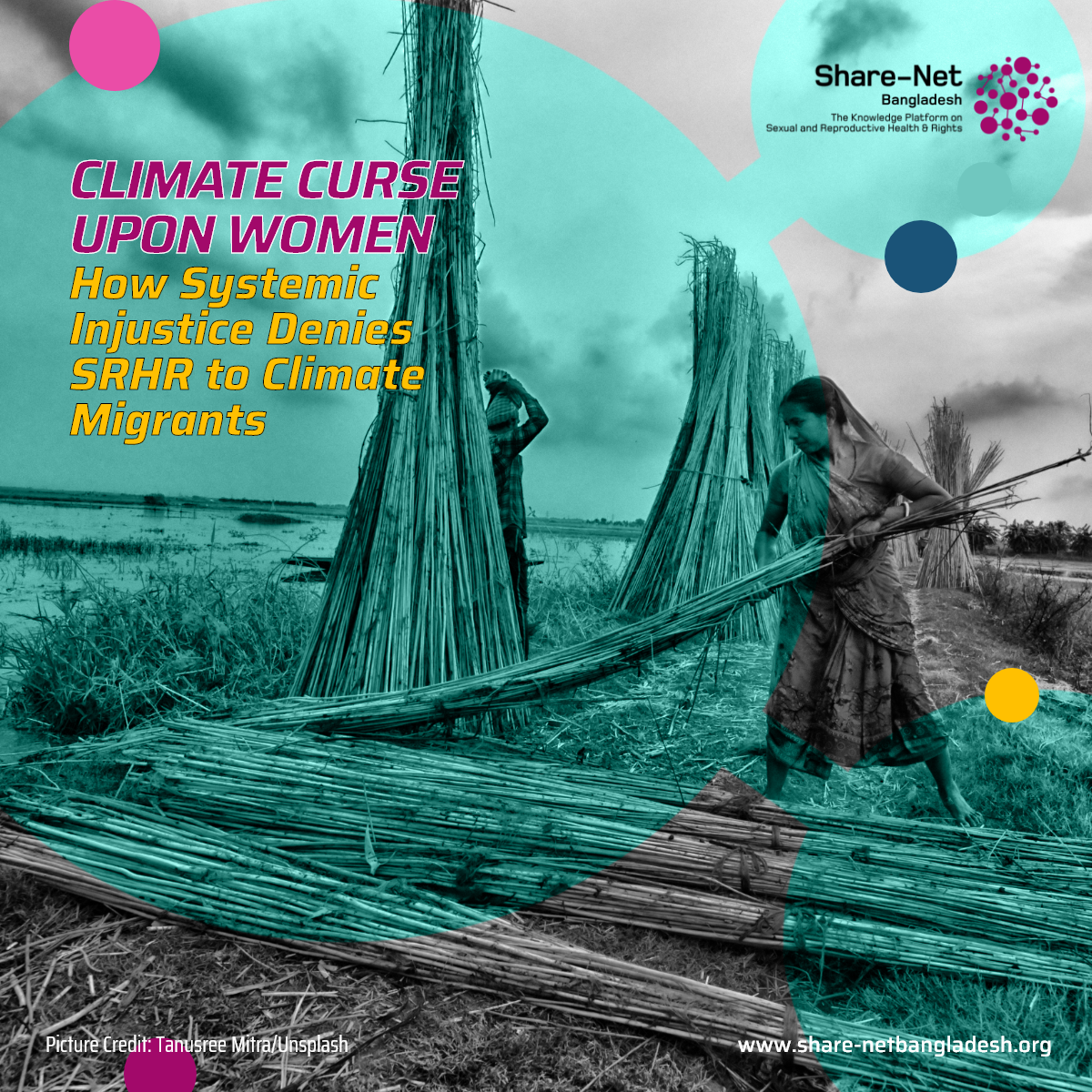Climate Curse Upon Women: How Systemic Injustice Denies SRHR to Climate Migrants
Bashonti’s story begins on a riverbank that no longer exists. Her family, once living in a lush village, was forced to leave everything behind due to river erosion — a growing curse in climate-vulnerable Bangladesh.
Each year, more than 100,000 people are displaced by river erosion alone, and 700,000 by climate-related disasters. Most flee to urban slums like Dhaka’s Korail or Rayer Bazar, only to trade one hardship for another.
But for women and girls like Bashonti, displacement is not just a logistical crisis — it’s a deep, unresolved crisis of sexual and reproductive health and rights (SRHR).
Bashonti’s early years in the slum were marked by poverty, violence, and neglect. At just five, she was cooking, fetching water, and navigating abuse from male neighbors. A staggering 88 percent of children in slums experience physical or sexual abuse — a silent epidemic. Her right to safety and dignity was buried under daily survival.
“Her childhood was cut short by the weight of adult burdens and unwanted touches,” one can say.
This reality, however, is not unique — it reflects a dangerous pattern among internally displaced climate migrants, especially women.
Access to clean water, menstrual hygiene, and safe toilets — all crucial to SRHR — remain out of reach for many like Bashonti. Only 27.9 percent of slum households use improved, non-shared toilets. When menstruation hit, Bashonti faced missed school days and shame — a fate shared by 40 percent of Bangladeshi girls, who miss school during their periods due to lack of facilities.
Bashonti’s battle didn’t end with education. Like many climate migrant women, she was pushed into early marriage, unpaid care work, and later, underpaid labour. In cities, rural women earn 45% less than men, and in the garment industry — Bangladesh’s economic backbone — women earn less and face rampant harassment, with 80 percent reporting abuse or witnessing it at work.
The burden is even greater after motherhood. In slums, children are 74 percent more likely to be underweight, and stunting rates are 60 percent higher than in non-slum areas. Without childcare or healthcare, Bashonti had to juggle work and parenting in unsafe, unhealthy spaces.
Despite Bangladesh’s progress in women’s labour participation, the gender gap in SRHR remains huge. Climate migrants, especially women, continue to be overlooked in national development plans. Their rights to healthcare, autonomy, safety, and dignity are sacrificed for short-term survival.
Yet, studies show that closing the gender gap could boost Bangladesh’s economy by 40 percent. The country cannot afford to ignore this potential.
“Until the contributions and needs of women like Bashonti are acknowledged, the façade of progress will remain fragile.”
Empowering women through gender equality and SRHR access must be central to climate adaptation and migration responses.
If Bangladesh truly aims for inclusive development, it must ensure that displaced women are not just survivors — but decision-makers in their own futures.
Source: The Daily Star
Picture Credit: Tanusree Mitra/Unsplash


